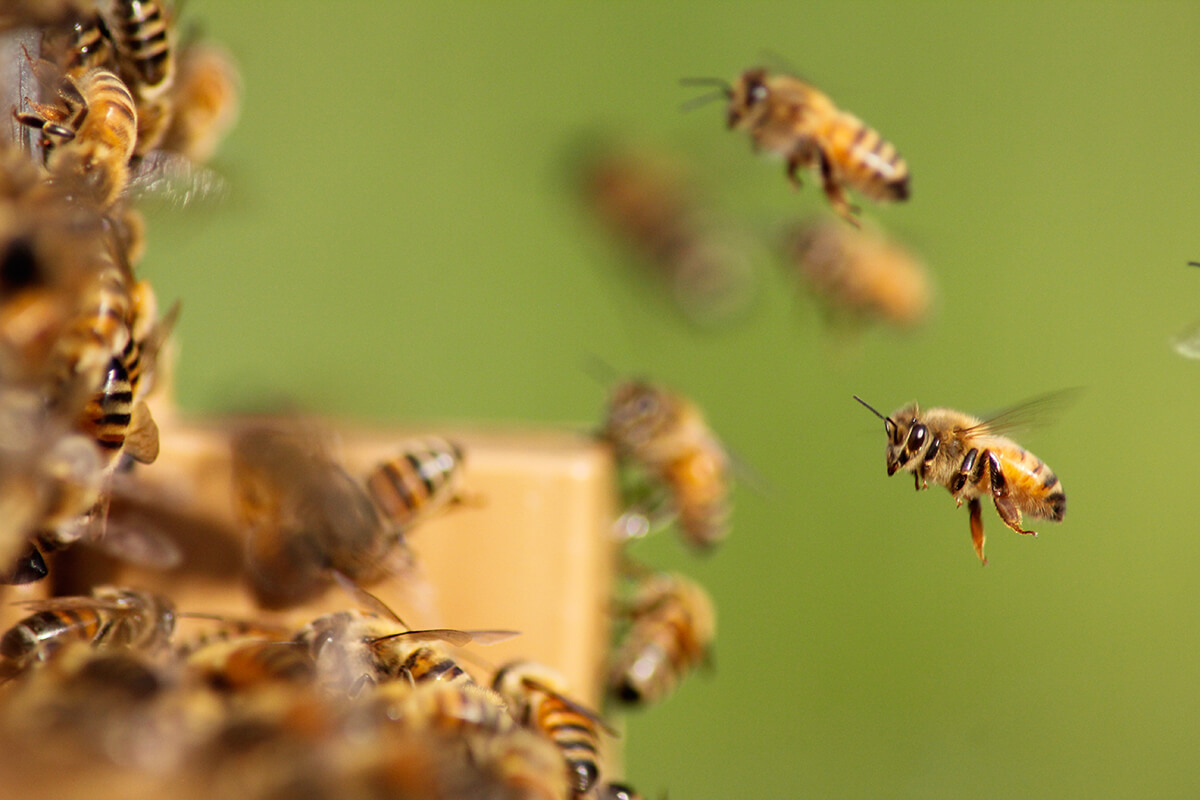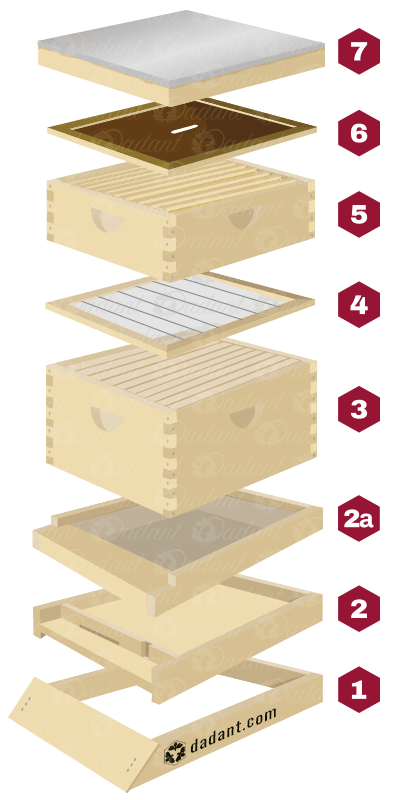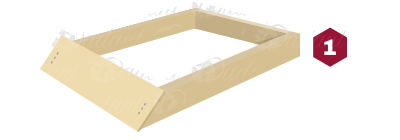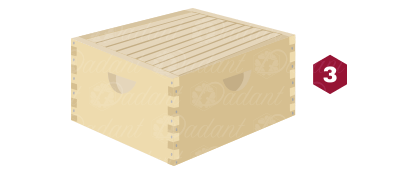How To Set Up A Bee Box


The beehive is the cornerstone of all modern beekeeping. It provides a rubber place for dear bees to shop food reserves and enhance the constant supply of young needed to keep colonies healthy and potent. Agreement the diverse components of the hive and how they part is an important first footstep to successful beekeeping.
In 1852, Lorenzo Lorraine Langstroth patented a design for a moveable-frame honey beehive. Today, variations on the Langstroth blueprint are still the standard for professional and hobbyist beekeepers throughout the globe.
The design's greatest asset is the ability to remove or swap out combs without dissentious or significantly agonizing the colony. This comeback over older hive designs helped lead a nifty expansion of the apiculture industry that started in the 1800s and continues to this day.
High-Quality Beehive Components from Dadant & Sons
To maximize longevity, the modern beehive by Dadant is constructed of Ponderosa Pine sourced exclusively from the Northwestern US. Each piece is manus-selected, wet metered and precision milled at our woodenware institute in Polson, Montana to ensure the highest quality end production.
Parts of a Beehive
A basic configuration for a hive consists of 7 components: a hive stand, bottom lath, hive torso, queen excluder, dear super, inner cover, and a hive cover.
i. Hive Stand

A hive stand functions to drag the hive off of the basis. This keeps the bottom board dry and helps to insulate the hive. While some beekeepers opt to create their own hive stands, Dadant sells a variety of styles including wooden hive stands, stainless steel hive stands and our newest Ultimate Hive Stand up made from recycled materials.
ii. Bottom Lath

The bottom board forms the floor in a beehive and provides a single bespeak for bees to enter and get out the hive. This entrance has two settings: a wide setting for warmer months, and a reduced size for colder atmospheric condition. This unmarried entrance also helps bees to defend the hive from possible threats. The bottom board should e'er be kept off of the basis for proper moisture command in the beehive.
2a. (Alternative) Screened Bottom Board

Screened bottom boards have gained in popularity over the past few decades. Past providing more than ventilation, a screened bottom board keeps the beehive libation in the summertime and improves control of moisture levels in the winter.
Using a screened lesser board has as well proved effective in keeping down Varroa mite numbers by allowing the mites to fall through the screen and out of the hives. The Dadant Screen IPM Board has an additional removable monitoring screen for checking Varroa levels of a hive.
Dadant Pro Tip: Using a screened bottom board alone is not an effective way to care for Varroa infestations! Screened bottom boards should be combined with other mitigation methods to proceed Varroa numbers in check. Learn more nigh identifying and combating Varroa and other pests in Honey Bee Pests and Diseases, Pt. one: Common Dear Bee Pests.
3. Hive Body (AKA Brood Chamber, Brood Nest, Breed Box, Deep Super)

Hive bodies are wooden boxes that serve every bit the living quarters for the colony and sit down directly on summit of the lesser board. Measuring 9-½" alpine, they are typically the largest components of the hive. Hive bodies concur either eight or x frames where the queen lays her eggs and workers store pollen and honey for nutrient. Each hive body has enough space to house between 50,000 and 60,000 workers.
To permit room for expansion and foreclose swarming, some beekeepers stack ii hive bodies together to provide increased space. This configuration is peculiarly useful in regions with cooler temperatures, as it allows for the larger colonies and increased food storage needed to survive the longer winters.
Dadant Pro Tip: To proceed components interchangeable, some hobbyists and beginner beekeepers elect to utilise medium-sized half dozen-5/8″ deep supers as a breed box.
4. Queen Excluder

The queen excluder is a flat section of the hive with a gauged metal filigree. The precise size of the filigree prevents the larger queen from leaving the hive body but allows worker bees to pass through. This restricts the queen to laying eggs and raising brood in the hive torso while the workers fill frames in the upper sections with love.
Dadant Pro Tip: Use of a queen excluder is usually non necessary in hives with more than i hive body.
v. Dearest Supers (AKA Shallow Super)

Honey supers get their name from their position in the hive: they are "superior," or to a higher place, the hive body. Bachelor in vi-5/8″ and 5-xi/sixteen″ depths, they are smaller than hive bodies to keep them lighter and easier to handle when total of honey. When "pulling" honey, beekeepers are removing full frames from honey supers to extract the dearest they contain.
6. Inner Cover

The inner cover helps provide the proper amount of working space and ventilation bees need. Dadant offers a diverseness of inner cover designs.
vii. Telescoping Beehive Cover

Using a telescoping cover that extends over the sides of the hive helps to protect the colony from inclement weather condition. The Dadant Painted Tele Cover features a galvanized top layer that adds an boosted protective barrier and aids in longevity.
Additional Beehive Components and Accessories
While there are a number of boosted hive components available for unlike applications, most beekeepers follow the in a higher place basic beehive setup. The majority of these components tin can be purchased pre-assembled and painted from Dadant. Nevertheless, some beekeepers bask the process of assembling and properly painting unfinished beehives.
Desire to know more about the tools beekeepers typically go along close at hand? Bank check out our article on 2nd-Year Beekeeper Equipment Needs!
Ready for more? Check out the next article in this series, Beehive Components Part II: Frames and Foundations, where we'll discuss the uses and benefits of different frame styles and foundations.
Have questions? Requite u.s. a telephone call at888.922.1293 or contact theclosest Dadant branch.
Visit our online store for apiculture equipment and educational materials.
Source: https://www.dadant.com/learn/beehive-components-part-i-building-a-hive-from-the-ground-up/

0 Response to "How To Set Up A Bee Box"
Post a Comment